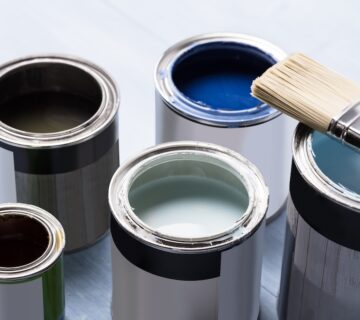In the world of home décor and renovation, the choice of paint plays a pivotal role in determining the aesthetic and functionality of a space. Traditionally, synthetic paints have dominated the market, but with growing environmental awareness, natural paints are making a resurgence. This blog presents a comparative study of natural and synthetic paints. We aim to help homeowners make informed choices based on their specific needs. We will delve into aspects such as composition, durability, health implications, and environmental impact, providing a holistic view that balances practical considerations with a commitment to sustainability.
Understanding Natural Paints
Composition and Benefits
Natural paints are paints made from renewable resources. They include ingredients like water, plant oils and resins, plant dyes, and natural minerals. They are known for their eco-friendly composition and contain little to no volatile organic compounds (VOCs), making them a healthier option for indoor air quality.
Natural paints are often celebrated for their unique aesthetic qualities. They can provide a rich, deep color that ages gracefully over time. Additionally, they are breathable, allowing moisture to pass through, which can be beneficial in older buildings to prevent mold growth.
Limitations
However, natural paints often come with certain limitations. Their color range can be less diverse than synthetic options, and they might not offer the same level of durability and washability. This can be a concern in high-traffic areas or spaces prone to spills and stains. Additionally, natural paints can be more expensive and might require more coats to achieve the desired opacity, which is an important consideration for budget-conscious homeowners.
Delving into Synthetic Paints
Composition and Advantages
Synthetic paints, including acrylics, latex, and oil-based options, are composed of chemical compounds and pigments. They are known for their durability, extensive color range, and ease of application. These paints dry quickly, offer excellent coverage, and many formulations are highly resistant to moisture and wear, making them suitable for various environments, including kitchens and bathrooms. Furthermore, manufacturers have refined synthetic paints over the years to produce a consistent finish that can withstand the rigors of daily life.
Drawbacks
The primary drawback of synthetic paints is their environmental and health impact. Many contain high levels of VOCs, which can off-gas into the environment. Off-gassing contributes to air pollution and potential health hazards. However, it’s important to note that advancements in paint technology have led to the development of low-VOC synthetic paints, addressing some of these concerns. Still, even low-VOC options may not be as sustainable as natural paints. This is because they often involve more energy-intensive production processes and less renewable resources.
Making the Right Choice
Considerations for Homeowners
When choosing between natural and synthetic paints, consider the specific needs of your space. For instance, in areas requiring high durability and moisture resistance, such as bathrooms and kitchens, synthetic paints might be more suitable. On the other hand, for homeowners prioritizing environmental sustainability and indoor air quality, natural paints could be the better option. It’s also crucial to assess the long-term costs and benefits, as the initial investment in natural paints may lead to savings in health and environmental impact over time.
Balancing Aesthetics and Practicality
The choice also depends on the aesthetic you want to achieve. Natural paints offer a unique, traditional look that can add character to a space. Conversely, synthetic paints provide a modern, crisp finish with a wide variety of color options. However, one must weigh the aesthetic benefits against practical considerations like longevity, maintenance, and the environmental implications of their choice. Ultimately, the decision should align with both the visual goals and the functional demands of the living space.
Final Thoughts
Both natural and synthetic paints have their own set of advantages and limitations. The decision ultimately comes down to balancing practical needs with aesthetic preferences, health considerations, and environmental impact. As paint technology continues to evolve, the gap between these two types of paints may narrow. Consequently, this offers homeowners more versatile and sustainable choices. For more insights into home painting and decoration, visit our website at sisupainting.com and explore our blog at sisupainting.com/blog.





No comment